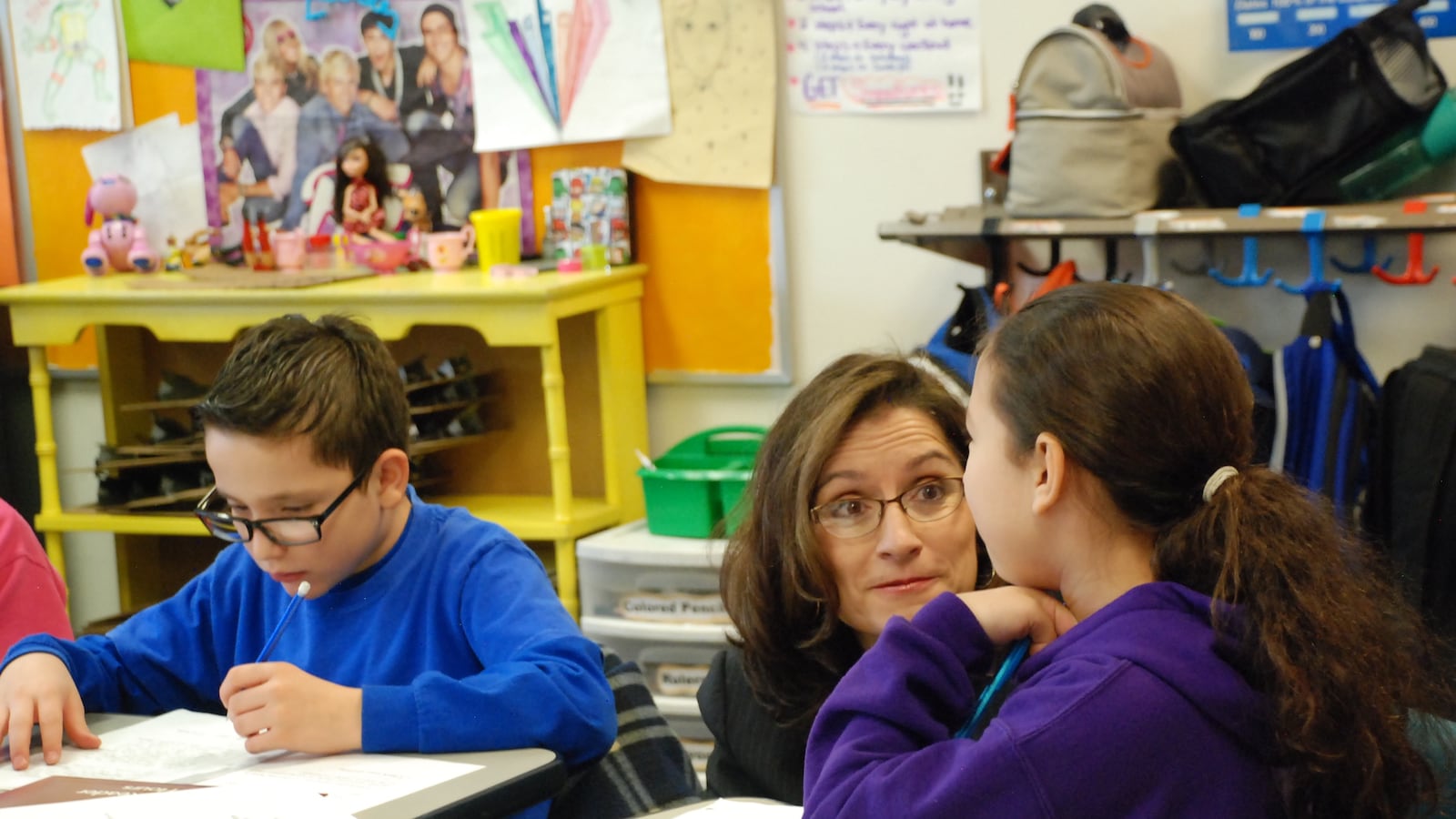Denver and Aurora public schools claim some of the widest income-based achievement gaps in the country, according to a new study examining how poor students are doing compared to their better-off peers.
The Education Equality Index, released Tuesday, is billed as a first-of-its kind comparative measure of achievement gaps on annual assessments in the 100 largest U.S. cities at the school, city and state level.
The gap in Denver Public Schools was bigger than nearly 90 percent of major U.S. cities, including similarly sized cities such as Seattle, Washington, D.C. and Memphis. The gap in Aurora, whose student demographics are comparable to Denver’s, was wider than 95 percent of other cities.
Both school districts have significantly narrowed the achievement gap by at least one measure, the report noted.
The interactive online index was developed by Memphis-based Education Cities and Oakland, Calif.-based GreatSchools, both nonprofits, and funded by the Michael and Susan Dell Foundation.
(Education Cities and GreatSchools later retracted the portion of the report about state-level changes, citing data analysis errors, but said its district-level analysis was sound.)
According to the index, both Denver and Aurora public schools narrowed their achievement gaps between 2011 and 2014 — Denver by a whopping 31 percent, ranking it second best in the nation, and Aurora by 10 percent.
Those figures, however, were calculated based on comparing the scores of Denver and Aurora kids living in poverty to state averages on test scores, which includes all students.
Comparing students living in poverty and those that don’t within the two districts tells a different story.
Between 2011 and 2014, income-based achievement gaps in Denver ran between 33 and 36 percentage points depending on the subject, according to an analysis by A-Plus Denver, a research and advocacy group that supports education reform. In Aurora, the gaps ran between 18 and 28 percentage points.
During that period, the achievement gaps in Denver grew by about 3 percentage points in math and were stagnant in reading and writing. In Aurora, the achievement gaps narrowed by about 3 percentage points in writing, and were stagnant in math and reading, according to A-Plus.
In part, the gaps are wider in Denver than in Aurora because Aurora students who are not living in poverty are scoring below the state average. Meanwhile, in gentrifying Denver, those students are faring better. While students from different socioeconomic backgrounds have showed gains in DPS, achievement gaps persist.
“I think what the (index) shows us is that it’s incredibly important to talk about equity and gaps, but it has to be contextualized,” said Lisa Berdie, policy director for A-Plus Denver.
In interviews Tuesday, DPS officials underscored their commitment to equity.
“When we talk about equity, we need to provide more resources to our most vulnerable kids,” said Anne Rowe, the school board president.
That includes more people and money devoted to social-emotional support, health and nutrition, she said.
DPS Acting Superintendent Susana Cordova pointed to the district’s incentives for teachers who work in high-need schools as another key strategy for narrowing achievement gaps.
In a prepared statement, Aurora Public Schools pointed to the district’s recent efforts to improve equity, including additional training opportunities for teachers.
The equity index also spotlighted Denver schools that have small or nonexistent achievement gaps with student populations in which a majority are from low-income families. Six of the seven are public charter schools:
- Denver School of Science and Technology (DSST): Green Valley Ranch High School
- Denver School of Science and Technology (DSST): Green Valley Ranch Middle School
- Denver School of Science and Technology (DSST): Stapleton Middle School
- Fred N. Thomas Career Education Center (the lone district-run school)
- KIPP Denver Collegiate High School
- KIPP Sunshine Peak Academy
- University Preparatory School
Skeptics of high-performing charters say their numbers are inflated by a process that makes engaged families more likely to enroll, and by policies that make it easier to shed struggling students.
“I am not saying we should not have these schools, but it’s not comparing apples to apples,” said former DPS board member Jeannie Kaplan, who noted that replicating successful charters is impossible because district-run schools do not have the same freedoms as charters in policy and practice.
“The reality is, they are operating on a different playing field,” Kaplan said.
Kimberlee Sia, executive director of KIPP’s Colorado schools, attributed the network’s success to work to identify gaps with students early on, defining strategies for getting kids up to speed and a pipeline that makes it more likely students that start with KIPP stick in the network.
“While they may have come to us two or three grade levels behind, because of the rigor of instruction, it helps contribute to closing the gaps,” Sia said.
A report last fall from the Seattle-based Center for Reinventing Public Education painted a similarly bleak picture of income-based achievement gaps in Denver Public Schools. Of 37 U.S. cities for which researchers were able to gather measurable data, Denver’s achievement gaps were the largest, that report found.
Chalkbeat reporter Melanie Asmar contributed information to this report.
Editor’s note: DPS board president Anne Rowe is married to Frank Rowe, Chalkbeat’s director of sponsorships. Frank Rowe’s position is not part of Chalkbeat’s news operation.

